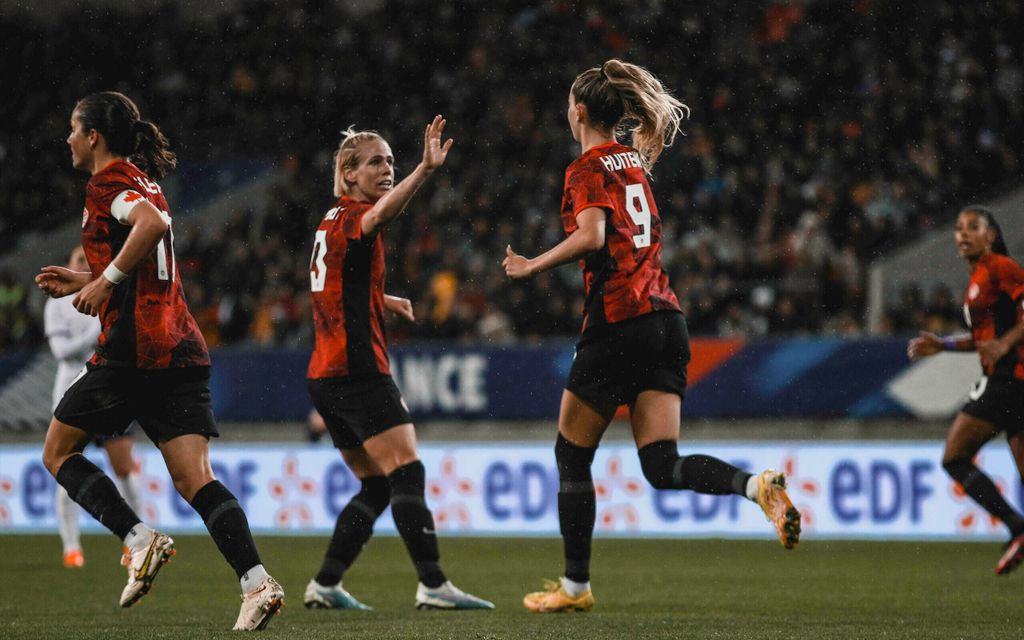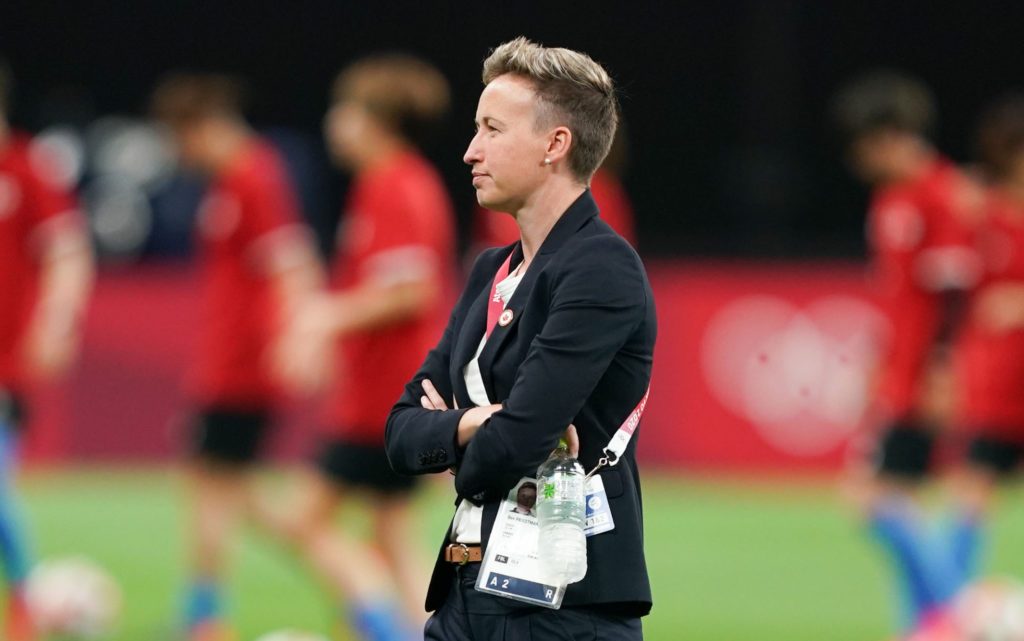2023 Women’s World Cup Preview: CanWNT on the hunt for soccer's ultimate prize

The Women’s World Cup kicks off one week from today, and the best national teams from around the planet have descended on Australia and New Zealand for a month of action, culminating in the final at Stadium Australia in Sydney on August 20.
Canada enter as the winners of the most recent major international tournament, the Tokyo 2020 Olympic Games — something that comes with high expectations both from within the squad and from their fans. With Canada’s tournament set to kick off on Thursday, July 21, against Nigeria, let’s take a look at how they got here, the year thus far, and more.
RELATED READING: Women’s World Cup 2023: Canada Team Guide || Women’s World Cup 2023: Canada Player Profiles
2023 thus far
Canada have only played four competitive matches thus far in 2023, three at the 2023 SheBelieves Cup, and a friendly in France in April. While results haven’t gone their way, there have been signs that they can compete with the best teams in the world, as is their expectation, if they can cut out uncharacteristic mistakes.
At the SheBelieves Cup, Canada played the host United States, Brazil, and Japan. In the first match against the Americans, Mallory Swanson gave the hosts the lead just seven minutes into the match, after nearly scoring earlier, just seconds into the game. Swanson would add a second goal later in the half, taking advantage of an errant pass from Vanessa Gilles that gave Swanson a wide-open goal to shoot at, and she made no mistake. That killed whatever momentum Canada had been building, and they were unable to recover.
Gilles would get some redemption in Canada’s next match against Brazil, scoring the winning goal with a header from a corner kick just after the half-hour mark. Kailen Sheridan put in a brilliant shift between the sticks and Evelyne Viens added a late goal to double the lead, and Canada would pick up three points with a 2-0 victory.
Canada’s third match, against Japan, was disappointing after the progress against Brazil. Japan sat deep in a low block that Canada found hard to penetrate, and Canada failed to capitalize on the few opportunities they did have. Kiko Seike opened the scoring, lunging forward to poke the ball under Sabrina D’Angelo and into the net, with the Canadian goalkeeper getting injured on the play. Yui Hasegawa doubled the lead late in the half from the penalty spot after Jun Endo was taken down by Kadeisha Buchanan in the box, and Endo would add a goal of her own late in the match to rub the salt in Canada’s proverbial wound.
Finally, at Stade Marie-Marvingt in Le Mans, France in April, Canada took on Les Bleues in a friendly match. After a scoreless first half, Grace Geyoro gave France the lead with a header from close range after Delphine Cascarino opened up a bit of space for herself and crossing the ball to her. While a great play from Cascarino, Canada will have felt that they could have been more composed defensively to perhaps prevent it. France’s second goal was definitely preventable, however, as Kailen Sheridan — who was way out of her net — passed the ball straight to Léa Le Garrec, who lobbed it into the net from distance. Jordyn Huitema took advantage of a goalkeeping mistake at the other end of the pitch to cut the deficit in half, but Canada couldn’t find an equalizer.
Before the World Cup kicks off, Canada will play England in a friendly match behind closed doors on Friday — a final tune-up ahead of the tournament beginning a few days later.

How Canada qualified for the World Cup
Canada qualified for the 2023 Women’s World Cup by winning Group B at the 2022 Concacaf W Championship. The top two teams from each group qualified for the World Cup, with the third places teams advancing to the inter-confederation playoffs to take on nations from other regions of the world.
Canada won their group comfortably, starting with a 6-0 win over Trinidad and Tobago on the first matchday of the group stage. They followed that with a 1-0 win over Panama a few days later, and a 2-0 victory against Costa Rica a few days after that, winning the group with a perfect nine points, a +9 goal difference, and the all-important spot at the World Cup.
From there, Canada beat Jamaica 3-0 in the semifinal to keep their perfect record alive and give themselves a shot at the trophy, but they fell 1-0 to the United States in the final on a late penalty scored by Alex Morgan. By finishing as the runner-up in that tournament, Canada also qualified for the Concacaf playoff to determine which team will join the United States (who qualified automatically by winning the final) at the Olympics in Paris next summer.
Canada will play against Jamaica, who are also going to the World Cup, in a two-legged series, with the first match happening away from home on September 18, and the second leg taking place at BMO Field in Toronto on September 26. Tickets will be available starting July 18 for as low as $15, and the winner of that playoff will also qualify for the Concacaf W Gold Cup in 2024.

Canada heading to their eighth Women’s World Cup
After missing out on the inaugural FIFA Women’s World Cup back in 1991, Canada haven’t failed to qualify since, and this will be their eighth tournament on the World Cup stage. While Olympic success has been consistent over the past decade — with three consecutive appearances on the podium, including a gold medal last time out — World Cup success has never really followed.
In four of their previous seven trips to the World Cup — in Sweden in 1995, the United States in 1999, China in 2007, and Germany in 2011 — Canada failed to get out of the group stage. The 2011 performance, where they finished last place in their group and got blown out by France as they picked up zero points, was particularly frustrating for the team. Head coach Carolina Morace resigned after the tournament, which led to Canada hiring John Herdman. The rest, they say, is history.
Canada reached the quarter-finals at the 2015 World Cup on home soil, winning a group with Germany, China and New Zealand, before beating Switzerland in the Round of 16 and narrowly losing to England in the quarters. Playing in six cities from coast to coast, the tournament set a record for the highest total attendance in its history (1,353,506) and was right in the middle of what has become Canada’s greatest-ever national team generation — which includes the aforementioned Olympic medals and a growing expectation for more and more success that perhaps wasn’t always there in Canada.
Their best performance at the World Cup came back in 2003, Christine Sinclair’s first major tournament. Sinclair and another Christine, Christine Latham, scored three goals each for Canada as Les Rouges made it all the way to the semifinals, before losing twice — to Sweden in the semifinals and the United States in the bronze medal match — and finishing fourth. Charmaine Hooper was named to the team of the tournament in her final World Cup, and Christine Sinclair has scored at every World Cup and Olympics since.
At the most recent edition of the tournament in France four years ago, Canada got out of Group E — beating Cameroon and New Zealand but losing to the eventual runners up the Netherlands — before moving on to play Sweden in the Round of 16. There, a goal from Stina Blackstenius early in the second half was the difference as Sweden went on to finish third in the tournament, dumping Canada out in the second round. It was a disappointing performance from the Canadians that included a saved penalty in the second half, surprisingly taken by Janine Beckie instead of Sinclair.
This time, as the reigning Olympic champions, they are heading to Australia and New Zealand looking to climb one more mountain and win the sport’s ultimate prize — the FIFA Women’s World Cup.
RELATED READING: Women’s World Cup 2023: Canada Team Guide || Women’s World Cup 2023: Canada Player Profiles
Coach’s profile: Bev Priestman
After leading Canada to an Olympic gold medal in her first major tournament as the head coach in the summer of 2021, Bev Priestman is now taking charge of a team at the Women’s World Cup for the first time. She has previously been an assistant coach at the World Cup — to John Herdman with Canada in 2015, and to Phil Neville with England in 2019.
Priestman, who is from Consett, England, has been tasked with transitioning a national team that wants to win now into a new era, with some of Canada’s senior players in what is likely their final World Cup and Olympic cycle. She has done that well, managing to win the Olympic gold in Tokyo while also giving young players an opportunity to win spots in the team and speed up that transitioning progress. Players like Julia Grosso, Jayde Riviere and Jordyn Huitema have continued to flourish under Priestman, while Simi Awujo and Olivia Smith are among those getting opportunities now to prove they belong.
The expectations for Priestman’s side are high. At the Olympics, her team successfully changed the colour of the medal from bronze to gold, and now they are looking to go one step further at the World Cup as well.

Who are Canada up against?
Canada have been drawn into Group B, along with the co-hosts Australia, the Republic of Ireland, and Nigeria. Those nations are ranked 10th, 22nd, and 40th in the final FIFA Women’s World Ranking before the tournament, with Canada the highest-ranked nation of the bunch in seventh.
They will play Nigeria first, on Thursday, July 20 (10:30 pm ET/7:30 pm PT) in Melbourne. They will then travel to Perth to take on the Republic of Ireland on July 26 (8 am ET/5 am PT), before finishing their group stage play against the hosts Australia back in Melbourne on July 31 (6 am ET/3 am PT). All matches can be watched live on TSN.
Canada are expected to get out of its group, but any team can beat anyone in what is being called the ‘Group Of Death’. Canada played both Australia and Nigeria in friendlies in 2022, beating Nigeria in Vancouver, BC before drawing with them a few days later in Langford. They beat Australia twice in a pair of friendlies Down Under in September.
There are a lot of top players around this group, with the great Australian forward Sam Kerr expected to be one of the biggest stars of the tournament, looking to guide her strong national team to a World Cup win on home soil. Nigeria are led up top by Barcelona forward Asisat Oshoala and Republic of Ireland Katie McCabe is one of the more entertaining players in the world down the left-hand side of the pitch.
The top two teams will move on to the next round, with the winner of the group taking on the runner-up in Group D, and the second-place team taking on the Group D winner. Group D is made up of England, Haiti, Denmark, and China.
For more on Canada and their Group B opponents, check out the Guardian’s Women’s World Cup 2023 Experts’ Network.

